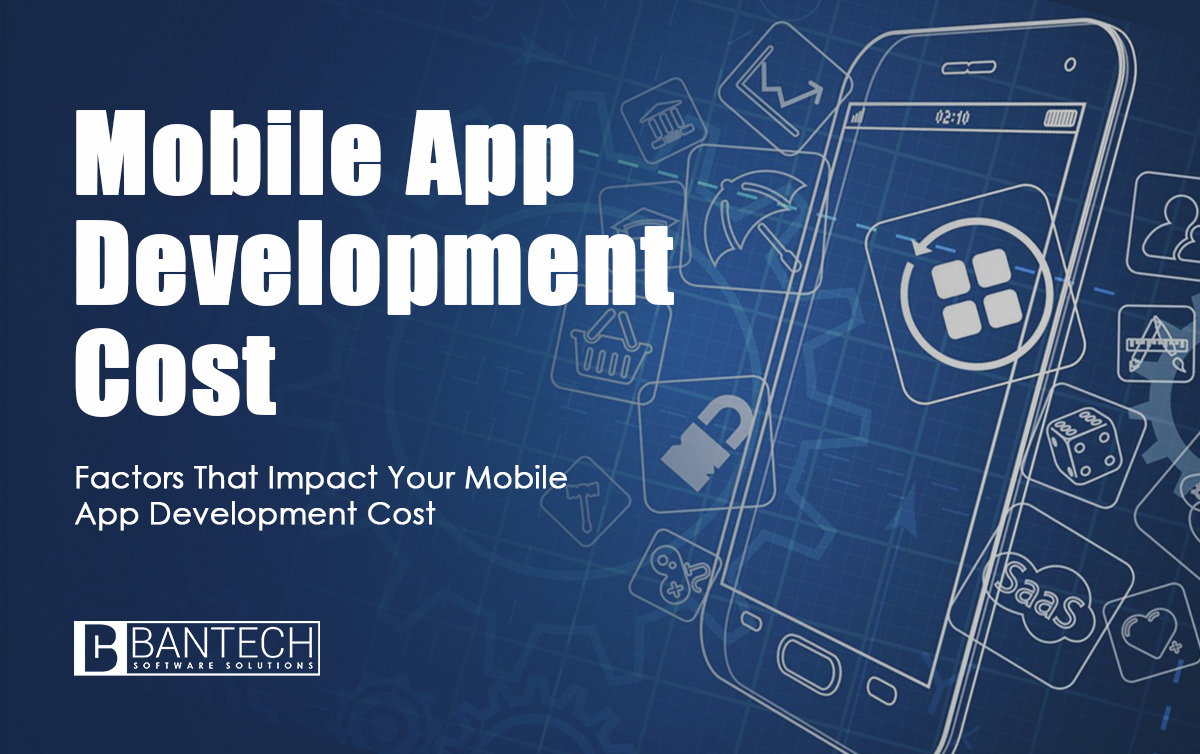Factors That Impact Your Mobile App Development Cost
The cost of developing a mobile app depends on a number of important aspects. You will get the best return on your growth and be able to make the most cost effective decisions if you are aware of these cost-affecting aspects. Additionally, it will help you in complying with the budget you have set.
Now let’s examine the main elements that influence the total cost of developing a mobile application
Note: The values shared within this post is only for representation purposes and the actual cost of development may vary depending on various factors.
1. Mobile App Complexity
Creating a basic app typically costs between $5,000 and $50,000. Basic user features like a dashboard, user profile functionality, login system, and limited management are included in a simple application.
A medium-complexity app can cost between $50,000 and $120,000. Numerous features for user interaction and app revenue are included in a medium-complex app. These apps include basic functions as well as social media integrations, payment gateways, streaming of audio and video, user privacy, and more.
The price of a sophisticated app may range from $100,000 to $300,000 or more. These applications incorporate cutting-edge technologies like AI, machine learning, and AR/VR. High-end data logic, multilingual support, and many other features are also included in these programs.
| App Type | Possible Features | Average Timeline | Average Cost |
| Simple application | MVP functionality
Basic UI |
2-3 months | $5,000-$50,000 |
| Medium application | Sophisticated features
Custom UI |
3-9 months | $50,000-$120,000 |
| Highly complex app | High level advanced features
Bespoke UI Two platforms |
10+ months | $100,000-$300,000 |
2. Features and Functionality
The cost of app development will be greatly influenced by the features and functionality you include in your application. The base mobile app development cost for the particular app type you want built may vary as new features are added. Your project schedule, resource allocation, and ultimate budget may all be greatly impacted by these changes. Therefore, it’s advisable to concentrate just on the most important features in the first version of the app. This strategy allows for a quicker time to market while also reducing upfront expenditures. By giving priority to essential features, you can make sure that your app balances cost-effectiveness and functionality while offering first-rate customer support at affordable costs.
The optimal approach in the early phases is to create a Minimum Viable Product (MVP). An MVP is a product’s first version that has just enough features to satisfy early adopters’ needs. MVP development places a strong emphasis on the essential aspects that address users’ main issues without making significant investments in additional features.
| Feature | Functionality | Approx Development Time | Average Development Cost |
| User Login | Login with social media
Login with email address Forgot password option Log out option |
30-48 hours | $750 – $1,200 |
| Profile Completion | Add basic info
Add photo Set region |
36 – 60 hours | $900-$1,500 |
| Messaging | Online/offline status
Typing status Send media files and documents Read/sent status |
150 – 200 hours | $3,750 – $5,000 |
| Push Notifications | Push notifications and reminders for users | 25 – 35 hours | $625 – $875 |
| Basic admin panel: User management | See list of users
Delete/block user Create user Edit user |
65 – 100 hours | $1625 – $2500 |
3. Application Category
One of the most important questions that everyone has when thinking about developing a mobile application is: How much does it cost to design an app? The response, however, is not at all straightforward and it differs greatly across categories. The variation is influenced by a multitude of factors that differ based on the type of app you are looking to develop.
- User Base:
The number of people served by various app categories varies. For example, a social networking app seeks to draw in millions of users worldwide, whereas a niche productivity app can focus on a more limited and focused audience. Development expenses might be significantly raised by the scalability requirements and the demand for a strong backend infrastructure in order to accommodate a larger user base. - Functionality:
An app’s primary features have a significant impact on how much it costs to develop. Building simple apps with basic functions, like a flashlight or calculator, is comparatively cheap. On the other hand, complicated apps with sophisticated features like e-commerce systems, real-time collaboration, or custom integrations cost more to design since they need more time, knowledge, and resources. - Security Requirements:
When developing apps, security is crucial, particularly for those that manage private data like financial transactions, medical records, or personal information. The security requirements for different app categories vary. For instance, strict security measures like encryption, secure authentication, and adherence to financial standards are required for banking apps. Compared to an app with low security requirements, meeting these strict security criteria comes at a higher cost. - Design and User Experience:
An app’s success is largely dependent on its design and user experience (UX). Apps in genres like social media and gaming place a high value on aesthetically pleasing and captivating user interfaces, which frequently incorporate complex animations, designs, and interactive features. Creating such intricate user experiences necessitates certain design knowledge and equipment, which raises development expenses. - Backend Infrastructure:
Servers, databases, and other backend components can be expensive, particularly for apps that need a lot of data and traffic. Although they provide scalable solutions, cloud services like AWS and Google Cloud have recurring fees that vary depending on consumption and storage requirements.
Empower your business, captivate your customers, and elevate your brand — get started on your mobile app and lead the digital revolution!
4. Application Design & Animation
App design is the next element that contributes to the answer of how much it costs to create an app. Making sure that consumers spend time on your app requires careful consideration of app design.
We typically have two choices when choosing an app design: Custom and Standard UI. Customized user interfaces are more costly than standard user interfaces because they are far more complex to design and build.
Animation and wireframes are additional components of mobile app design.
- Wireframing:
The developers utilize Wireframing to generate maps and features that improve the user experience. Photoshop, Balsamiq, and MARVEL are examples of specialized tools that are employed. - Animation:
Animation has gained popularity as a way to add interest and usability to specific parts of any application. Animations are frequently used extensively in social media and gaming applications.
Best Practices for Application Design & Animation
- K.I.S.S (Keep it simple silly):
Steer clear of complexity and clutter in the design of your app. Make an effort to design a simple, intuitive interface that is easy for users to utilize. - Consistency:
Keep design components like buttons, icons, and typography consistent. Consistency enhances the user experience overall and aids in interaction prediction. - Performance First:
Make sure animations run smoothly and don’t affect how well the program performs. Without creating lag or delays, optimized animations can improve the user experience. - Make Use of Animations:
There should be a purpose behind every animation. Users may become frustrated and distracted by superfluous animations, so avoid utilizing them only for aesthetic purposes.
5. Application Platform
Selecting a platform is crucial when beginning the mobile app development process. You can choose to create an iOS, Android, web, or cross-platform application based on who your target audience is. It’s advisable to start with just one platform if you have a small budget; you can switch to more platforms later.
The following are the most popular choices for app development platforms:
- Native app platforms (iOS and Android):
In terms of language, Android apps are developed using Java and/or Kotlin, whilst iOS apps are developed using Swift and Objective C. - Web app platform:
Compared to native apps, web apps such as Progressive Web Apps and others are far less expensive. When it comes to development costs, web app development typically costs between $15,000 and $50,000. - Platform for hybrid apps:
Hybrid apps combine online and native applications. It operates as a webview component but is installed similarly to a native application. - Cross-platform:
The latest cost-effective trend is to have an app produced for both iOS and Android at the same time. Numerous advantages of the platform include reduced development effort and the utilization of a single code. The Flutter and React Native platforms currently dominate the cross-platform market.
6. Application Maintenance
Costs do not stop at the last phase of developing a mobile application. To stay up with the shifting market trends and new device and operating system versions, businesses will need to continually updating their apps, which will come at a cost. How much does it cost to develop an app?
- Updates and Bug Fixes:
App compatibility problems may arise from the regular updates to mobile operating systems (iOS, Android). Frequent updates are required to address issues and guarantee seamless operation. - Security Maintenance:
In order to safeguard user data and stop breaches, security is an essential component of app maintenance. Frequently updating the application to address security flaws and complying with data protection laws like the GDPR is an integral part of security maintenance.. - Performance Optimization:
Enhancing the application’s functionality and user experience. Also, improving responsiveness and app loading times along with resource management i.e. effective control of battery and memory utilization leads to optimal application performance. - Feature Enhancements:
To maintain the app’s competitiveness and user engagement, add new features or enhance current ones. In addition, user feedback and market trends also play an important role. - Third Party Services:
Expenses for the third-party services and APIs that the application uses includes maintaining compatibility with third-party services which is known as API maintenance and also includes the coverage of subscription fees costs of outside services like analytics, cloud hosting, etc. - Infrastructure and Server:
Maintaining up with the infrastructure and backend servers that power the application. This includes server maintenance, monitoring and updates. And also adapting the infrastructure to accommodate a rise in the number of users.
Planning and budgeting require an understanding of the variables that affect the cost of developing mobile apps. Every factor, from the platform and development team selection to the intricacy of features and design, has a big impact on the final cost.
In the end, an effective and sustainable mobile application that satisfies user expectations and accomplishes organizational objectives will result from a carefully thought-out budget that takes into consideration all possible expenses.
Keep in mind that spending money on high-quality development and maintenance ensures a reliable, safe, and user-friendly application over time.












